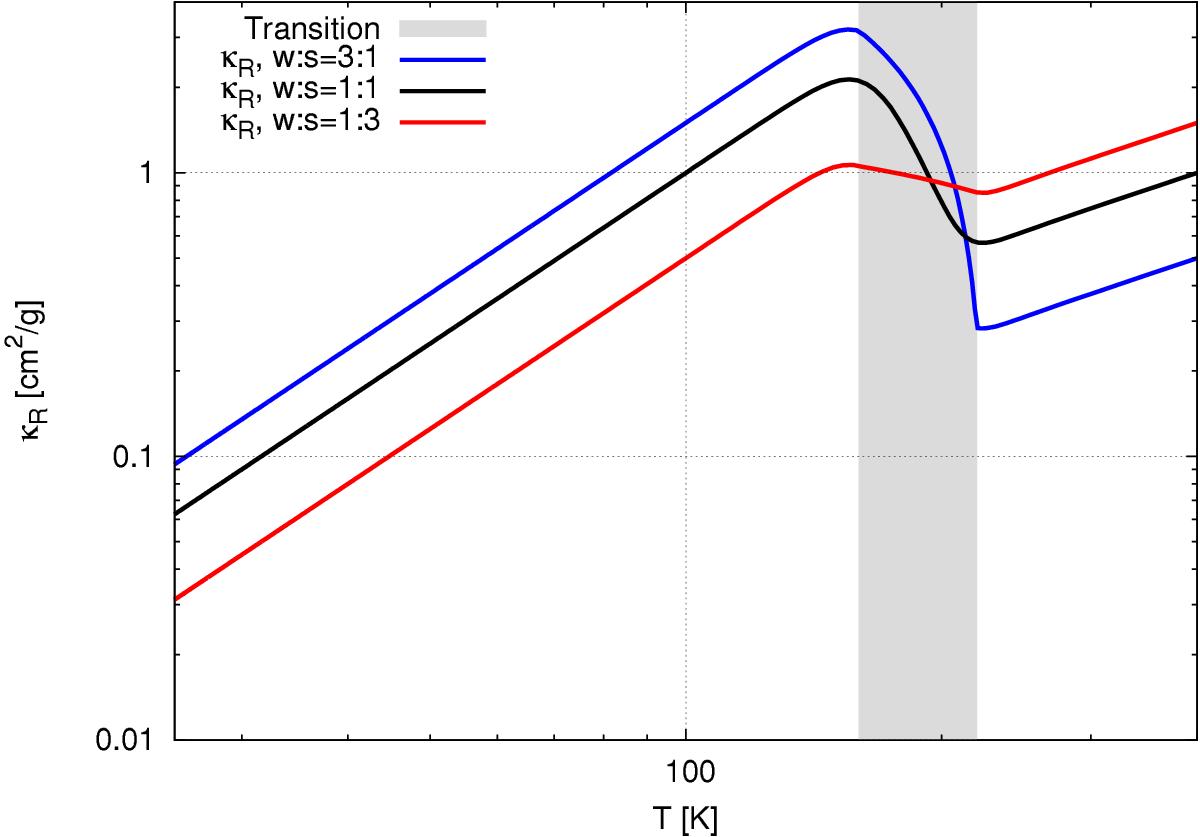Fig. 1

Rosseland mean opacity for micrometre-sized dust grains for the different water-to-silicate ratios. For low temperatures the discs with more water have a larger opacity, because the reflection and absorption parameters for water ice grains yield a higher opacity than for silicate grains. At the water ice line (grey area) ice grains sublimate, causing a drop in opacity. This drop is larger if the water fraction in the disc is high. The opacity at higher temperatures is larger for discs with more silicates, because more silicate grains are available that can contribute to the opacity. The values of opacity here are calculated for a disc with a total metallicity of Zdust = 0.5% in dust grains.
Current usage metrics show cumulative count of Article Views (full-text article views including HTML views, PDF and ePub downloads, according to the available data) and Abstracts Views on Vision4Press platform.
Data correspond to usage on the plateform after 2015. The current usage metrics is available 48-96 hours after online publication and is updated daily on week days.
Initial download of the metrics may take a while.


